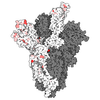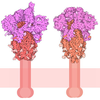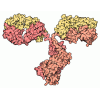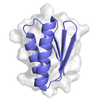+ Open data
Open data
- Basic information
Basic information
| Entry | Database: PDB / ID: 8xrq | ||||||
|---|---|---|---|---|---|---|---|
| Title | SARS-CoV-2 BA.1 spike RBD in complex bound with VacBB-639 | ||||||
 Components Components |
| ||||||
 Keywords Keywords | PROTEIN BINDING / Antibody / VIRAL PROTEIN-IMMUNE SYSTEM COMPLEX | ||||||
| Function / homology |  Function and homology information Function and homology informationMaturation of spike protein / viral translation / Translation of Structural Proteins / host cell surface / Virion Assembly and Release / host extracellular space / symbiont-mediated-mediated suppression of host tetherin activity / Induction of Cell-Cell Fusion / structural constituent of virion / entry receptor-mediated virion attachment to host cell ...Maturation of spike protein / viral translation / Translation of Structural Proteins / host cell surface / Virion Assembly and Release / host extracellular space / symbiont-mediated-mediated suppression of host tetherin activity / Induction of Cell-Cell Fusion / structural constituent of virion / entry receptor-mediated virion attachment to host cell / host cell endoplasmic reticulum-Golgi intermediate compartment membrane / membrane fusion / Attachment and Entry / positive regulation of viral entry into host cell / receptor-mediated virion attachment to host cell / host cell surface receptor binding / symbiont-mediated suppression of host innate immune response / receptor ligand activity / endocytosis involved in viral entry into host cell / fusion of virus membrane with host plasma membrane / fusion of virus membrane with host endosome membrane / viral envelope / virion attachment to host cell / SARS-CoV-2 activates/modulates innate and adaptive immune responses / host cell plasma membrane / virion membrane / identical protein binding / membrane / plasma membrane Similarity search - Function | ||||||
| Biological species |   Homo sapiens (human) Homo sapiens (human) | ||||||
| Method | ELECTRON MICROSCOPY / single particle reconstruction / cryo EM / Resolution: 4.19 Å | ||||||
 Authors Authors | Liu, C.C. / Ju, B. / Zhang, Z. | ||||||
| Funding support |  China, 1items China, 1items
| ||||||
 Citation Citation |  Journal: J Immunol / Year: 2025 Journal: J Immunol / Year: 2025Title: Rapid clonal expansion and somatic hypermutation contribute to the fate of SARS-CoV-2 broadly neutralizing antibodies. Authors: Miao Wang / Congcong Liu / Qing Fan / Yuehong Sun / Shilong Tang / Huimin Guo / Bing Zhou / Haiyan Wang / Xiangyang Ge / Zheng Zhang / Bin Ju /  Abstract: Several vaccines and immunization strategies, including inactivated vaccines, have proven effective in eliciting antibodies against severe acute respiratory syndrome coronavirus 2 (SARS-CoV-2), ...Several vaccines and immunization strategies, including inactivated vaccines, have proven effective in eliciting antibodies against severe acute respiratory syndrome coronavirus 2 (SARS-CoV-2), providing an opportunity to characterize the antibody response. In this study, we investigated the monoclonal antibody responses elicited by wild-type SARS-CoV-2 inactivated vaccination compared to those elicited by natural infection and mRNA vaccination. The analysis showed that antibodies encoded by biased germline genes were shared between SARS-CoV-2 vaccinated and naturally infected individuals. Among the 35 shared clonotypes identified, besides the well-known IGHV3-53 and IGHV1-58, we identified a class of IGHV4-59 antibodies characterized by rapid response and neutralizing activity, elicited by 3 doses of inactivated vaccine. Members of this lineage exhibited similar sensitivity against wild-type SARS-CoV-2, whereas different neutralizing activities against SARS-CoV-2 variants, especially against various Omicron subvariants, BA.1, BA.2, BA.2.12.1, BA.4/5, and BA.2.75. Structural analysis of BA.1 spike complexed with VacBB-639 revealed that the IGHV4-59-lineage antibodies belonged to the Class 2/3 group. Using sequence alignment, site-mutation assays, and functional verification, we identified two substitutions, N60K in HFR3 and S56G in HCDR2, contributing to opposite neutralization changes of IGHV4-59-lineage antibodies against these Omicron subvariants. These results demonstrate the importance of somatic hypermutation in the evolution of prototypical antigen-elicited antibodies in terms of their neutralization breadth and potency against SARS-CoV-2 Omicron variants. | ||||||
| History |
|
- Structure visualization
Structure visualization
| Structure viewer | Molecule:  Molmil Molmil Jmol/JSmol Jmol/JSmol |
|---|
- Downloads & links
Downloads & links
- Download
Download
| PDBx/mmCIF format |  8xrq.cif.gz 8xrq.cif.gz | 91.8 KB | Display |  PDBx/mmCIF format PDBx/mmCIF format |
|---|---|---|---|---|
| PDB format |  pdb8xrq.ent.gz pdb8xrq.ent.gz | 68.1 KB | Display |  PDB format PDB format |
| PDBx/mmJSON format |  8xrq.json.gz 8xrq.json.gz | Tree view |  PDBx/mmJSON format PDBx/mmJSON format | |
| Others |  Other downloads Other downloads |
-Validation report
| Summary document |  8xrq_validation.pdf.gz 8xrq_validation.pdf.gz | 1 MB | Display |  wwPDB validaton report wwPDB validaton report |
|---|---|---|---|---|
| Full document |  8xrq_full_validation.pdf.gz 8xrq_full_validation.pdf.gz | 1 MB | Display | |
| Data in XML |  8xrq_validation.xml.gz 8xrq_validation.xml.gz | 33.8 KB | Display | |
| Data in CIF |  8xrq_validation.cif.gz 8xrq_validation.cif.gz | 46.9 KB | Display | |
| Arichive directory |  https://data.pdbj.org/pub/pdb/validation_reports/xr/8xrq https://data.pdbj.org/pub/pdb/validation_reports/xr/8xrq ftp://data.pdbj.org/pub/pdb/validation_reports/xr/8xrq ftp://data.pdbj.org/pub/pdb/validation_reports/xr/8xrq | HTTPS FTP |
-Related structure data
| Related structure data | 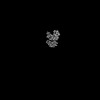 38610MC M: map data used to model this data C: citing same article ( |
|---|---|
| Similar structure data | Similarity search - Function & homology  F&H Search F&H Search |
- Links
Links
- Assembly
Assembly
| Deposited unit | 
|
|---|---|
| 1 |
|
- Components
Components
| #1: Protein | Mass: 25415.879 Da / Num. of mol.: 1 Source method: isolated from a genetically manipulated source Source: (gene. exp.)  Gene: S, 2 / Cell line (production host): HEK293 / Production host:  Homo sapiens (human) / References: UniProt: P0DTC2 Homo sapiens (human) / References: UniProt: P0DTC2 |
|---|---|
| #2: Antibody | Mass: 13325.778 Da / Num. of mol.: 1 Source method: isolated from a genetically manipulated source Source: (gene. exp.)  Homo sapiens (human) / Cell line (production host): HEK293 / Production host: Homo sapiens (human) / Cell line (production host): HEK293 / Production host:  Homo sapiens (human) Homo sapiens (human) |
| #3: Antibody | Mass: 11664.938 Da / Num. of mol.: 1 Source method: isolated from a genetically manipulated source Source: (gene. exp.)  Homo sapiens (human) / Cell line (production host): HEK293 / Production host: Homo sapiens (human) / Cell line (production host): HEK293 / Production host:  Homo sapiens (human) Homo sapiens (human) |
| Has protein modification | Y |
-Experimental details
-Experiment
| Experiment | Method: ELECTRON MICROSCOPY |
|---|---|
| EM experiment | Aggregation state: PARTICLE / 3D reconstruction method: single particle reconstruction |
- Sample preparation
Sample preparation
| Component |
| ||||||||||||||||||||||||
|---|---|---|---|---|---|---|---|---|---|---|---|---|---|---|---|---|---|---|---|---|---|---|---|---|---|
| Source (natural) |
| ||||||||||||||||||||||||
| Source (recombinant) |
| ||||||||||||||||||||||||
| Buffer solution | pH: 7 / Details: PBS | ||||||||||||||||||||||||
| Specimen | Conc.: 1.2 mg/ml / Embedding applied: NO / Shadowing applied: NO / Staining applied: NO / Vitrification applied: YES Details: SARS-COV-2 spike proteins were concentrated to about 2mg/mL and incubated with VacBB-639 Fab for 30min (1:2 molar ratio) | ||||||||||||||||||||||||
| Specimen support | Grid material: COPPER / Grid type: Quantifoil R1.2/1.3 | ||||||||||||||||||||||||
| Vitrification | Instrument: FEI VITROBOT MARK IV / Cryogen name: ETHANE / Humidity: 100 % / Chamber temperature: 277 K / Details: blot for 5s, wait for 2s, blot force:0 |
- Electron microscopy imaging
Electron microscopy imaging
| Experimental equipment |  Model: Titan Krios / Image courtesy: FEI Company |
|---|---|
| Microscopy | Model: FEI TITAN KRIOS |
| Electron gun | Electron source:  FIELD EMISSION GUN / Accelerating voltage: 300 kV / Illumination mode: FLOOD BEAM FIELD EMISSION GUN / Accelerating voltage: 300 kV / Illumination mode: FLOOD BEAM |
| Electron lens | Mode: BRIGHT FIELD / Nominal magnification: 105000 X / Nominal defocus max: 2500 nm / Nominal defocus min: 1500 nm / Calibrated defocus min: 1500 nm / Calibrated defocus max: 2500 nm / Cs: 2.7 mm / C2 aperture diameter: 70 µm / Alignment procedure: COMA FREE |
| Specimen holder | Cryogen: NITROGEN / Specimen holder model: FEI TITAN KRIOS AUTOGRID HOLDER / Temperature (max): 90 K / Temperature (min): 90 K |
| Image recording | Average exposure time: 1.82 sec. / Electron dose: 50 e/Å2 / Film or detector model: GATAN K3 (6k x 4k) / Num. of grids imaged: 1 / Num. of real images: 4899 |
| EM imaging optics | Energyfilter name: GIF Bioquantum / Energyfilter slit width: 20 eV |
| Image scans | Width: 5760 / Height: 4092 |
- Processing
Processing
| EM software |
| ||||||||||||||||||||||||||||||||||||||||
|---|---|---|---|---|---|---|---|---|---|---|---|---|---|---|---|---|---|---|---|---|---|---|---|---|---|---|---|---|---|---|---|---|---|---|---|---|---|---|---|---|---|
| CTF correction | Type: PHASE FLIPPING AND AMPLITUDE CORRECTION | ||||||||||||||||||||||||||||||||||||||||
| Particle selection | Num. of particles selected: 5391498 | ||||||||||||||||||||||||||||||||||||||||
| 3D reconstruction | Resolution: 4.19 Å / Resolution method: FSC 0.143 CUT-OFF / Num. of particles: 104464 / Symmetry type: POINT | ||||||||||||||||||||||||||||||||||||||||
| Atomic model building | Protocol: RIGID BODY FIT / Space: REAL / Target criteria: Correlation coefficient | ||||||||||||||||||||||||||||||||||||||||
| Atomic model building | Source name: AlphaFold / Type: in silico model |
 Movie
Movie Controller
Controller



 PDBj
PDBj
